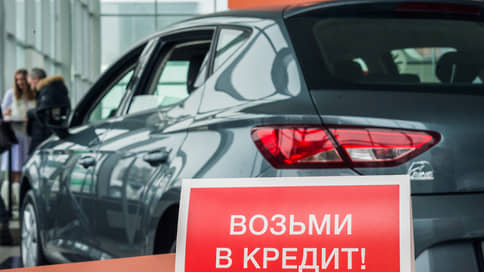By the end of 2023, the car loan portfolio may grow by 14–16%
[ad_1]

By the end of 2023, the car loan portfolio may grow by 14-16%, up to 1.4 trillion rubles, the NKR rating agency believes. This is higher than in 2021. However, experts emphasize, it is important to take into account that the portfolio will grow mainly due to an increase in the average check and lengthening of lending terms. In quantitative terms, the market is still far from recovery: the shortage of cars, including used ones, remains.
“Kommersant” got acquainted with the study of the NKR on the Russian car loan market. The agency believes that by the end of 2023, the portfolio of loans for the purchase of a car can grow by 14-16% and reach 1.4 trillion rubles. Earlier forecasts of market recovery were more modest. So, until recently, experts believed that car loans could reach the level of 2021 – 935.3 thousand loans for 1.1 trillion rubles. (see Kommersant dated May 11).
The change in the forecast is explained by rising prices and the realization of pent-up demand as consumers get used to the increased level of uncertainty, the authors of the study explain. “The partial resumption of the state program of preferential car loans – support for sales of new cars worth up to 2 million rubles – also had a moderate positive effect,” they say.
But the state support budget may be exhausted already in the first half of the year, Alexander Vasiliev, senior manager of the DRT automotive industry group, warns.
At the same time, the factors hindering the recovery of car loans remain. “The number of loans issued will be relatively stable, the market will continue to grow mainly due to a further increase in the average bill for cars in all segments,” the NKR notes. “In addition, due to rising prices and a shortage of new cars, consumers are increasing the period of ownership of equipment” . Because of this, a further increase in the number of transactions in the used car market is unlikely, which will also hold back the dynamics of car loans.
“Parallel imports partially replace the supply of cars of brands that have left the market, but the share of such new cars is small, it is only about 10%,” the agency notes. The market is still far from saturation, half of the existing demand cannot yet be satisfied, agrees Viktoria Sinichkina, director of the automotive practice at Trust Technologies (former PwC).
According to Avtostat, in January-April 2023, almost 247 thousand new cars were sold in the Russian Federation. This is 15% less than in the same period of 2022, and half as much as in January-April 2021. Used car sales for four months amounted to almost 1.75 million vehicles, an increase of 17.3%.
“There is still a shortage of new car supply: for the volume of Chinese cars that enter the market, there is strong competition both between dealers and between car loan banks,” notes Frank RG project leader Stanislav Sukhov. “In such a situation, auto brands can dictate their terms and maximize income.”
The decline in sales of expensive cars affects the average check, but this is offset by a rise in prices in the middle and low price segments, adds Dmitry Maslov, managing director of Expobank. “Basically, the market growth is provided by a significant demand for used cars, an increase in the average check and positive dynamics of the new car market (in April there was a formal sharp increase associated with the extremely low base of April 2022, immediately after the outbreak of hostilities in Ukraine and the first rounds of sanctions .— “b”),” says Aleksey Bessonov, head of Rosbank’s product policy department.
According to Alexei Bocharnikov, head of the VTB car lending department, the car loan portfolio at the end of the year could approach 1.8 trillion rubles, and sales could grow to 1.1-1.2 trillion rubles. However, Dmitry Maslov emphasizes, “if the geopolitical situation changes, the forecasts may lose their relevance.”
[ad_2]
Source link





